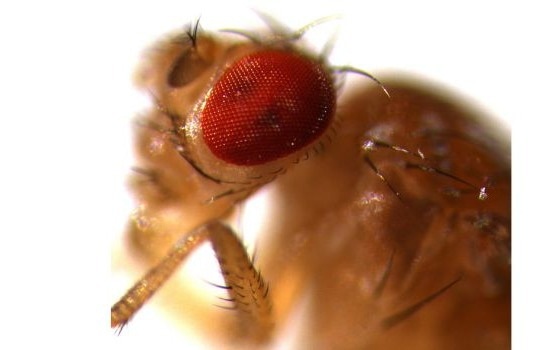Despite their small size, fruit flies have contributed much to the understanding of the genetic foundation of the fast evolution of male external genitalia through sexual selection.
 Scanning electron micrographs of Drosophila simulans (top) and D. mauritiana (bottom) posterior lobes extending from the genital arch over the claspers. Image Credit: Kentaro Tanaka
Scanning electron micrographs of Drosophila simulans (top) and D. mauritiana (bottom) posterior lobes extending from the genital arch over the claspers. Image Credit: Kentaro Tanaka
The male external genitalia of insects and the tails of peacocks are examples of secondary sexual traits that have evolved among the fastest-evolving animal body parts.
This is believed to be caused by sexual selection, which includes female preference and the various evolutionary demands placed on each sex to select the best partner and maximize fitness.
Now, two closely related species of tiny insects have different genitalia due to the evolution of one gene, thanks to research headed by bioscientists.
Genome Editing
The male genitalia of Drosophila mauritiana and Drosophila simulans were examined namely the posterior lobes.
In fewer than 240,000 years, the size and shape of these lobes have rapidly evolved, with Drosophila simulans lobes being significantly larger than Drosophila mauritiana.
They discovered that, in comparison to Drosophila simulans, developed greater levels of the gene Sox21b suppressed the growth of the genital lobes in Drosophila mauritiana.
They accomplished this by altering the genomes of Drosophila mauritiana and Drosophila simulans to demonstrate how modifications to Sox21b altered the size and form of the posterior lobes. This had an impact on how long these flies spent mating as well.
Sexual Selection
Other insects and animal’s genitalia have been demonstrated to undergo evolutionary change due to sexual selection, but this is one of the rare instances where the underlying gene has been found.
The researchers claim that since male flies utilize their posterior lobes to hold female flies during mating, their findings may provide a better understanding of how sexual selection affects the genome to cause changes in the size and shape of genitalia.
Source:
Journal reference:
Ridgway, A. M., et.al., (2024). Sox21b underlies the rapid diversification of a novel male genital structure between Drosophila species. Current Biology. doi.org/10.1016/j.cub.2024.01.022